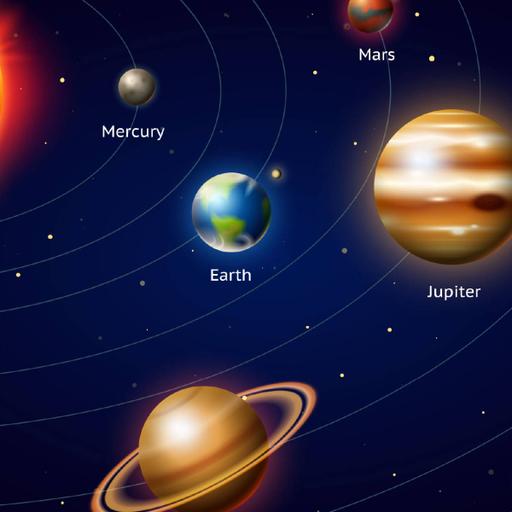The Solar System
Presentations | English
The Solar System has 8 planets, about 160 of which are moons, and 5 dwarf planets. In addition, there are meteorites, comets, and extraterrestrial layers in the Solar System. They formed about 4.6 billion years ago from a giant molecular cloud. Mercury, Venus, Earth, and Mars are called terrestrial planets. These mainly consist of rocks and metals. The four outer planets are called gas giants. These are much larger than the inner planets. Hydrogen and helium are the major constituents of the largest planets, Jupiter and Saturn. Uranus and Neptune, the outermost, are composed mainly of ice, water, ammonia, and methane. Hence, they are also called ice giants. The solar system is rich in thousands of tiny particles. The asteroid belt between Mars and Jupiter is rich in such substances. Their structure is similar to that of terrestrial planets. Rocks and metals are the main constituents. There are many similar substances in the area known as the Kuiper belt outside Neptune. These consist mainly of ice, water, ammonia and methane. The dwarf planets Ceres, Pluto, Homia, Makemake and Eris are in the region. They are spherical in shape by their own gravity. There are other objects such as comets, extraterrestrial dust, moons, and planetary orbits. The flow of plasma particles from the Sun is called the solar wind. This creates a bubble in the interstellar medium. This is called the heliosphere. Long-lived comets come from the outermost part of the Solar System, known as the Ort cloud. In the past, people did not have a proper understanding of the structure of the solar system. At that time, it was thought that the earth was the center of the universe and that the sky and its objects revolved around the earth. The Greek philosopher Aristarchus was the first to introduce the theory of the heliocentric universe. Nicholas Copernicus gave a mathematical explanation. It was expanded by Galileo Galilei, Johannes Kepler and Isaac Newton. Using theories of physics, they explained that the same laws that govern other planets apply to Earth. The invention of the telescope led to the discovery of more planets and moons. With the advent of modern telescopes and spacecraft, new information about the planet's surface and atmosphere began to emerge.

Free
PPTX (29 Slides)
The Solar System
Presentations | English
